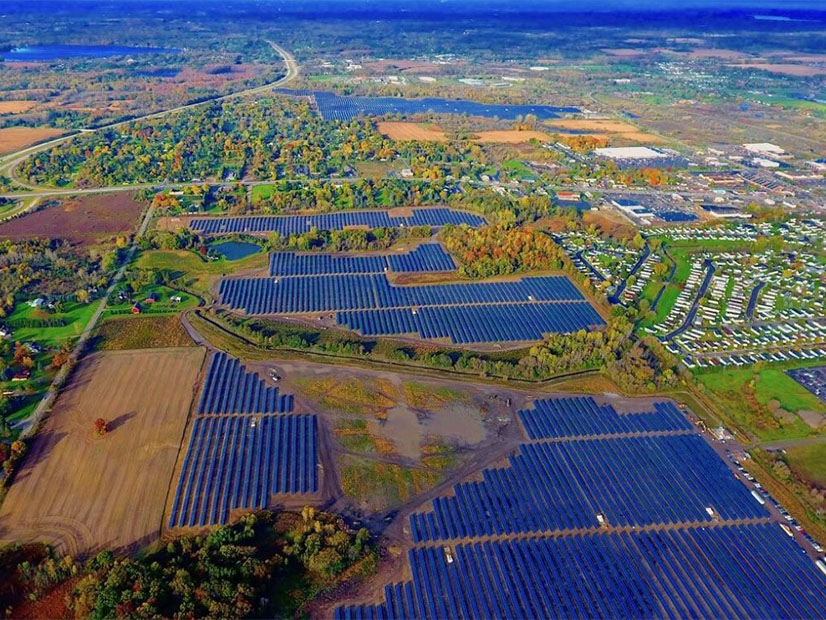CARMEL, Ind. — MISO’s resource adequacy stakeholder group is starting the new year by tackling new capacity accreditations for renewable and energy storage resources.
Lynn Hecker, senior manager of resource adequacy coordination, said the RTO hopes to have some new accreditation designs drafted by the end of the year.
She said during a Resource Adequacy Subcommittee (RASC) meeting Wednesday that a “fundamental shift” continues in the resource mix, with the generator interconnection queue dominated by renewable energy. Hecker said the footprint’s record-breaking, weather-dependent generation warrants a fresh look at accreditation.
Hecker asked stakeholders for suggestions on what new accreditation designs might look like for renewables, storage and hybrid formats that are combinations of both.
Currently, a new availability-based accreditation for thermal resources is pending before FERC. MISO did not propose a new accreditation design for renewable or storage resources as part of its recent capacity auction redesign. Instead, it kept its effective load carrying capability (ELCC) method in place for wind resources, explaining that the calculation already accounts for output that varies by season. (See MISO’s Seasonal Capacity Proposal Opposed at FERC.)
Some stakeholders have said that using two different methodologies for fossil fuel-fired and intermittent resources constitutes unfair treatment. RASC meetings during 2021 saw contentious debate on the appropriateness of applying an accreditation based on historical availability to fossil resources, with many members critical of the idea.
MISO plans to evaluate the usefulness of its wind resources’ ELCC method . Staff said it might not accurately capture capacity contributions during the footprint’s highest reliability risks.
The grid operator only has about 2 GW of solar currently participating in its markets, not enough yet to provide the historical data the ELCC relies on.
Hecker said solar is poised for explosive growth. “We feel like this is the appropriate time for us to start looking into solar accreditation changes,” she said.
Hecker also said MISO will first focus on renewable energy accreditation before proposing capacity credit treatment for storage resources.
When pressed by stakeholders, she said she couldn’t yet pin down a gigawatt threshold for participating energy storage before MISO would need an accreditation method.
“The magnitude of it cannot be overstated. We’re seeing more rapid change of the industry than at any point in our careers,” said the Brattle Group’s Sam Newell, who was contracted by the RTO to give advice on accreditation.
Newell called out record wind and solar additions, increasing demand response, changing daily load shapes and climate change as affecting capacity contributions.
“And now we’re in the news about reliability, about the transformation to clean energy,” he said. “Accurate accreditation is key to verifying adequate supply, signaling adequate planning … and identifying the economic tradeoff between resources.”
Newell said an ELCC calculation still “makes a lot of sense.” He said grid operators will need “quite a few years of data” to model energy-limited and intermittent resource performance. He also said they must consider that load is also weather driven.
“We’re going to have to argue about this a lot. That’s the business we’re in,” Newell told the RASC.
Staff Preps for Annual Auction
MISO is gearing up for possibly its final annual capacity auction. In advance of the auction, stakeholders have asked whether the RTO can share information on capacity resources that plan to take seasonal outages. Staff said it might provide that data at the local resource zone level to avoid revealing proprietary information.
For the 2022-23 planning year, the grid operator anticipates a 121-GW coincident systemwide peak with 157 GW in total installed capacity and almost 128 GW in total unforced capacity.
Fleet-wide, MISO’s wind capacity resources will have a 15.5% capacity credit in 2022-23, down one percentage point from the prior planning year.
MISO will conduct the Planning Resource Auction in early April.



